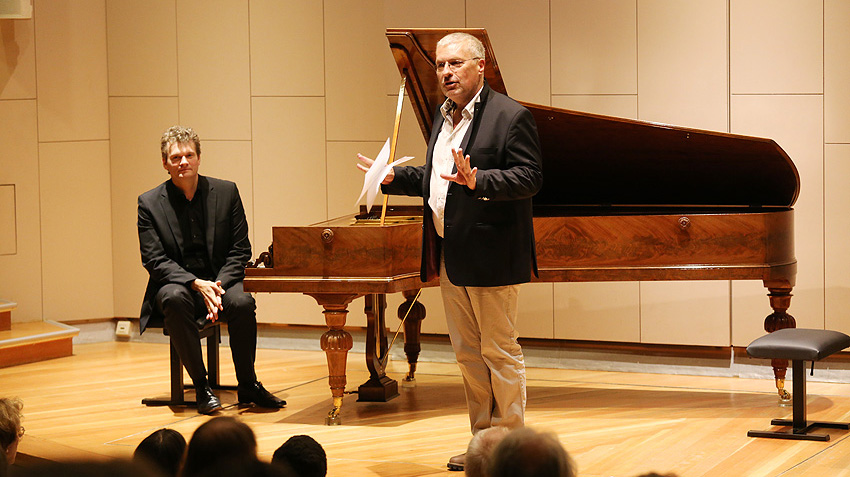Bereichsnavigation
Interpretation Research
Interpretation research is one focus of scholarly work at the Institut für Musikforschung. It takes as its starting point the sound created during performance, which is understood as the primary manifestation of composed music. Researchers at the SIM, then, are less concerned with the score produced by the composer than with the acoustic reality of its performance. The performance of music is understood as a manifold phenomenon. It is connected with a large number of different aspects that must each be handled differently with regard to historical factors and the documentation and methods used. A large number of research fields and issues come into play.

The historical approach is both object- and source-based. At the Musikinstrumenten-Museum, work naturally centers on object-based research. As a result of the museum’s interdisciplinary perspective, however, this organological focus has broader historico-cultural dimensions. Discology research, too, looks first and foremost at objects, in this case physical sound storage media, which it interrogates as witnesses to the actual event of the musical performance and interprets using historical source-related methods. Lastly, the museum’s source-based research on the Viennese School of Music looks at the history of performance and has an editorial component as well.
The institute’s multivolume series Geschichte der musikalischen Interpretation im 19. und 20. Jahrhundert (The History of Musical Interpretation in the 19th and 20th Centuries) presents interpretation from a variety of perspectives: as a history of ideas, a portrayal of institutions and media, a systematic examination of specific parameters, and finally, as a review of historical concepts and individuals relevant to the field of musical interpretation.
The SIM series Interpret*innen-Fenster (Showcase of Musical Interpretation) reintroduces forgotten figures from the history of musical interpretation. These profiles appear at irregular intervals and are based primarily on materials held in the SIM library.
Systematic approach
From a systematic point of view, acts of interpretation are understood to include not just artistic performances in the narrow sense but also decisions regarding performance spaces and physical arrangements. They also include sound production, sound collage and tonal balance in the case of music transmission, and even decisions made by the listener regarding the playback order and situation. Accordingly, one can distinguish between interpretation at the level of the performer (primary), the level of the transmission (secondary), and the level of the receiver (tertiary). Researchers at the SIM are interested in the effects of all of these factors. Since the department responsible for systematic music research (Department III) is also concerned with acoustics, sound studio technology and production practices, it naturally places an emphasis on secondary interpretation. In its studies, it combines methods of empirical data collection and analysis from the fields of psychology and the social sciences with acoustic and electro-acoustic techniques for producing test stimuli.

